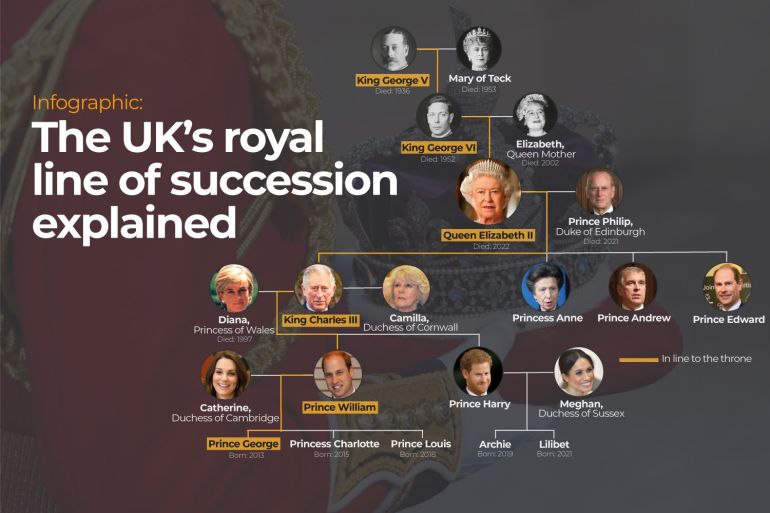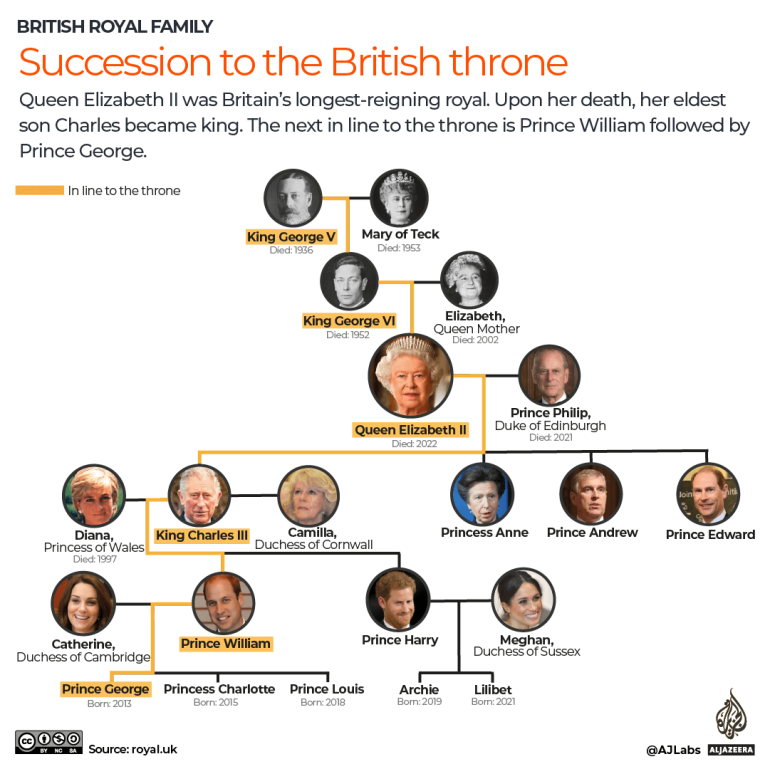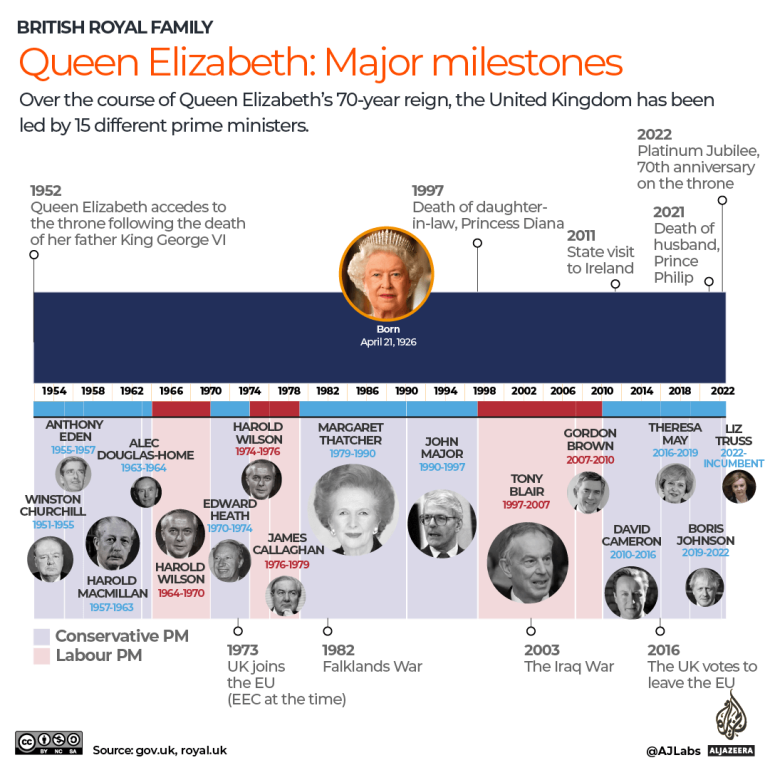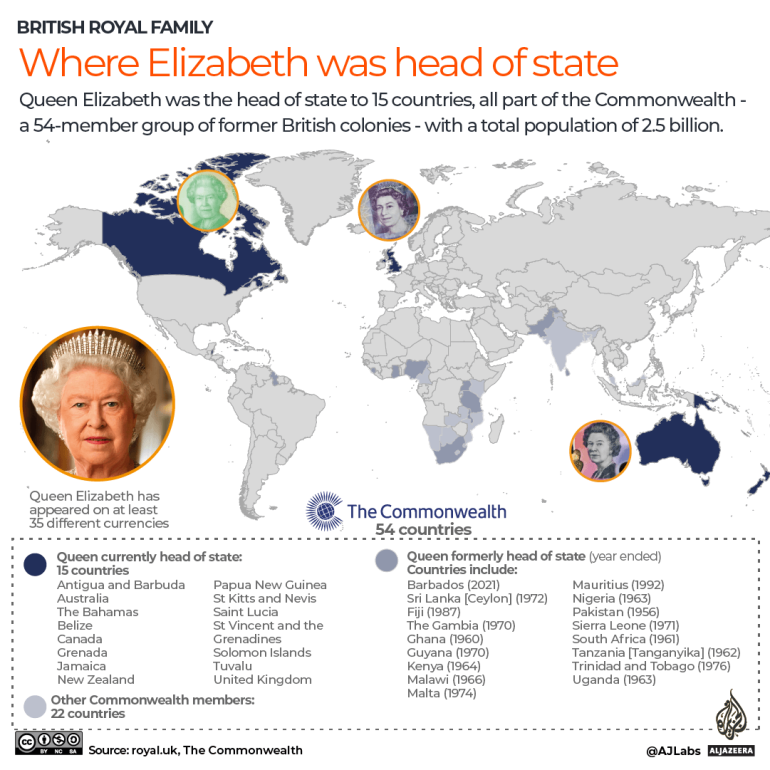Infographic: The UK’s royal line of succession explained
Al Jazeera takes a look at the life and family of Queen Elizabeth II, the longest-reigning British monarch.

Queen Elizabeth II, Britain’s longest-reigning monarch, has died at 96 after 70 years on the throne, Buckingham Palace has said.
Elizabeth II was born in London on April 21, 1926. She was most likely set to remain a princess until she was nudged towards succession by the abdication of her uncle, King Edward VIII, in 1936, and her father – King George VI – was crowned.
Keep reading
list of 3 itemsUK’s Queen Elizabeth II dies at 96
Queen Elizabeth II, the monarch who ‘always put duty first’
In 1952, when she was 25 years old, Elizabeth acceded to the throne, following the death of her father.
In 2015, she became the United Kingdom’s longest-ruling monarch, overtaking her great-great-grandmother Queen Victoria, who reigned for more than 63 years.
Succession to the British throne determines who will become the next king or queen. It is decided based upon descent, religion and primogeniture.
Protestant descendants of Princess Sophia, the granddaughter of James I, are eligible to the throne. The future monarch must also be “in communion” with the Church of England.
Previously, younger male heirs acceded to the throne, displacing elder daughters. However, in 2013, a law was passed that allowed female heirs equal rights in the line of succession.
As Prince Charles becomes King Charles III, the line of succession for the British crown is:
Prince William, the duke of Cambridge (40)
Prince George (9)
Princess Charlotte (7)
Prince Louis (4)

Political milestones
During Queen Elizabeth’s 70-year reign, the UK has been led by 15 different prime ministers.
The queen played an important role in approving elected prime ministers and met them regularly.
When Elizabeth II acceded to the throne, Winston Churchill was the first prime minister she had dealings with. When Churchill died in 1965, the queen broke royal protocol when she arrived at his funeral before his family.
In the span of the queen’s rule, many significant royal, national and world events occurred, from the establishment of the European Union (EU) to the Iraq War and the UK’s exit from the EU.
In 2011, the queen made the first state visit by a monarch to the Republic of Ireland, marking a significant moment in British and Irish history given the countries’ fraught historical relationship.
In 2021, Prince Philip, the queen’s husband of 73 years, passed away. The couple were married in 1947 and the queen described him as her “strength and stay”.

Commonwealth countries
The queen was the head of state to 15 countries, all part of the Commonwealth – a 54-member group of former British colonies – with a total population of 2.5 billion people.
During the 1960s, more than 20 former British colonies became independent. During this period, immigration from the Commonwealth states to the UK increased.
However, it was also a period of extensive emigration of Britons abroad. As such, the 1962 Commonwealth Immigrants Act was established to curtail immigration from Commonwealth states.
Over the years, at least 17 countries have removed the queen as their head of state and became republics. In November 2021, the Caribbean island nation of Barbados became the most recent country to do so.
